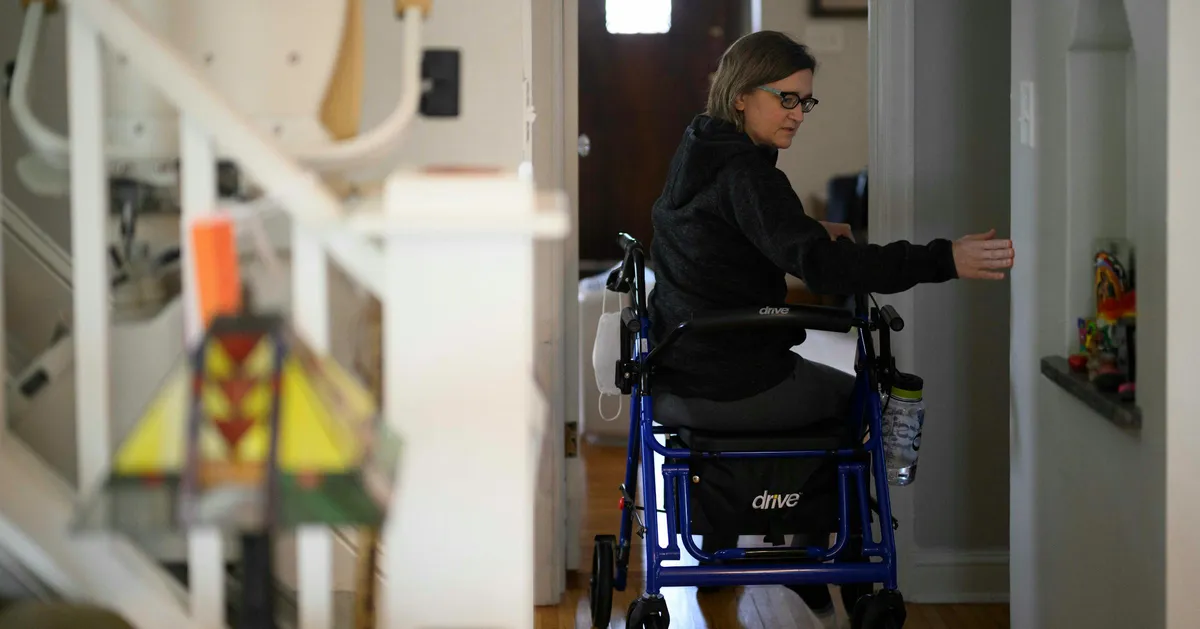
After experiencing post-exertional malaise, many individuals have learned the hard way that pushing themselves too hard only drains their energy further. For instance, Amy Engebretson, a former triathlete and distance runner, illustrates this with a metaphor: “Say you have a dollar’s worth of energy a day. If you spend $10 in one day, you’re going to be in trouble. You’re going to be stuck, you know, laying in bed for a week or two.” This stark reality has become all too familiar for those suffering from long COVID, a condition that has gained recognition since the pandemic.
Before the COVID-19 pandemic, severe fatigue from various viral and bacterial infections was relatively rare and often misattributed to factors like depression or laziness. However, with the surge of COVID-19 cases, chronic fatigue has emerged as a significant and legitimate health concern. Research is now delving into the biological and cellular origins of long COVID, providing a crucial foundation for developing new treatments.
Recent studies conducted by scientists in San Francisco have revealed that COVID-19 can interfere with fibrinogen, a protein essential for blood clotting. This disruption can lead to harmful blood clots that hinder nerve cell function and brain activity. Additionally, COVID has been shown to reactivate dormant viruses like Epstein-Barr and disturb the balance of healthy bacteria in the gut, further complicating recovery.
Experts, including Dr. Grach, suggest that long COVID may be partially caused by an overactive immune response that fails to shut off properly post-illness. To manage this, treatments aimed at moderating the immune system could prove beneficial. Dr. Grach emphasizes the importance of personalized therapy and exercise plans to help patients optimize their energy levels without exacerbating their symptoms.
Among the treatments explored, the antiviral Paxlovid was initially hoped to help eliminate lingering viruses in patients with long COVID. However, studies have yielded inconclusive results, leading Minnesota's new Long COVID Guiding Council to refrain from endorsing this treatment for clinicians. Many patients, including Engebretson, have experienced delayed recovery, with symptoms persisting for months or even years.
Despite the challenges, Engebretson remains optimistic. She observes improvements in her condition, including a reduction in brain fog that allows her to read more. Incorporating daily meditative breaks into her routine has also contributed to her well-being. Additionally, she volunteers her time to promote research and treatment options for long COVID through a weekly newsletter, encouraging others to seek immediate treatment for initial COVID-19 symptoms to potentially mitigate the progression to long COVID.
As a medical professional, Engebretson recognizes the difficulties in diagnosis, sharing, “I am a doctor, you know. I have all the advantages, right? But it took me like a year and a half before I was diagnosed with long COVID.” This statement highlights a critical issue; many individuals may be experiencing similar symptoms but are unaware of their condition or reluctant to acknowledge its seriousness. Engebretson’s experience serves as a reminder of the importance of recognizing and addressing the symptoms of long COVID.